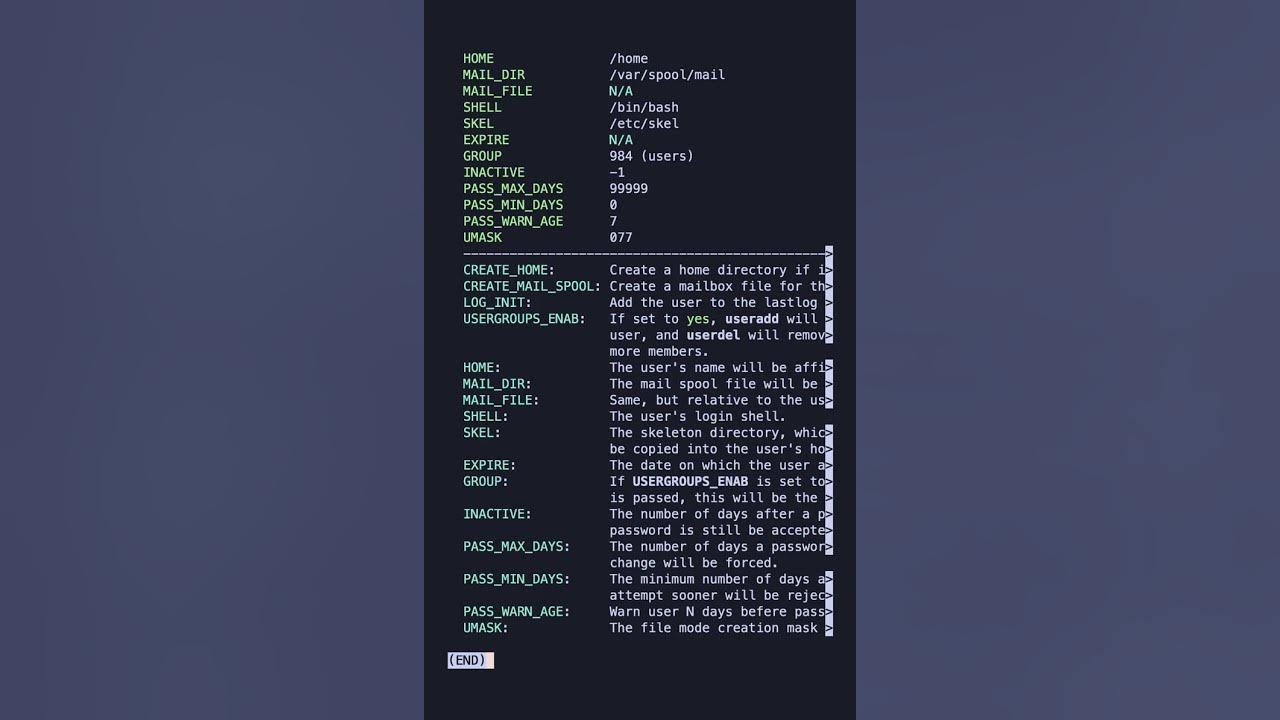Source code: https://gist.github.com/sebastiancarlos/1a5b04099b750f5a15c77c8cb4f03fc8
### Sample output:
#
# CREATE_HOME no
# CREATE_MAIL_SPOOL no
# LOG_INIT yes
# USERGROUPS_ENAB yes
# HOME /home
# MAIL_DIR /var/spool/mail
# MAIL_FILE N/A
# SHELL /bin/bash
# SKEL /etc/skel
# EXPIRE N/A
# GROUP 984 (users)
# INACTIVE -1
# PASS_MAX_DAYS 99999
# PASS_MIN_DAYS 0
# PASS_WARN_AGE 7
# UMASK 077
# -------------------------------------------------------------------------------------
# CREATE_HOME: Create a home directory if it does not exist.
# CREATE_MAIL_SPOOL: Create a mailbox file for the user.
# LOG_INIT: Add the user to the lastlog and faillog databases.
# USERGROUPS_ENAB: If set to yes, useradd will create a group with the name of the
# user, and userdel will remove the user's group if it contains no
# more members.
# HOME: The user's name will be affixed to form the new home.
# MAIL_DIR: The mail spool file will be created using this value.
# MAIL_FILE: Same, but relative to the user's home directory.
# SHELL: The user's login shell.
# SKEL: The skeleton directory, which contains files and directories to
# be copied into the user's home directory.
# EXPIRE: The date on which the user account will be disabled, if any.
# GROUP: If USERGROUPS_ENAB is set to no, or if the flag -N/--no-user-group
# is passed, this will be the new user's group.
# INACTIVE: The number of days after a password has expired in which the
# password is still be accepted. -1 disables the inactive period.
# PASS_MAX_DAYS: The number of days a password may be used. If is older, a password
# change will be forced.
# PASS_MIN_DAYS: The minimum number of days allowed between password changes. Any
# attempt sooner will be rejected.
# PASS_WARN_AGE: Warn user N days befere password expiration.
# UMASK: The file mode creation mask is initialized to this value.



Of all the things I’ve wondered about my Linux install… this was not really one of them, no